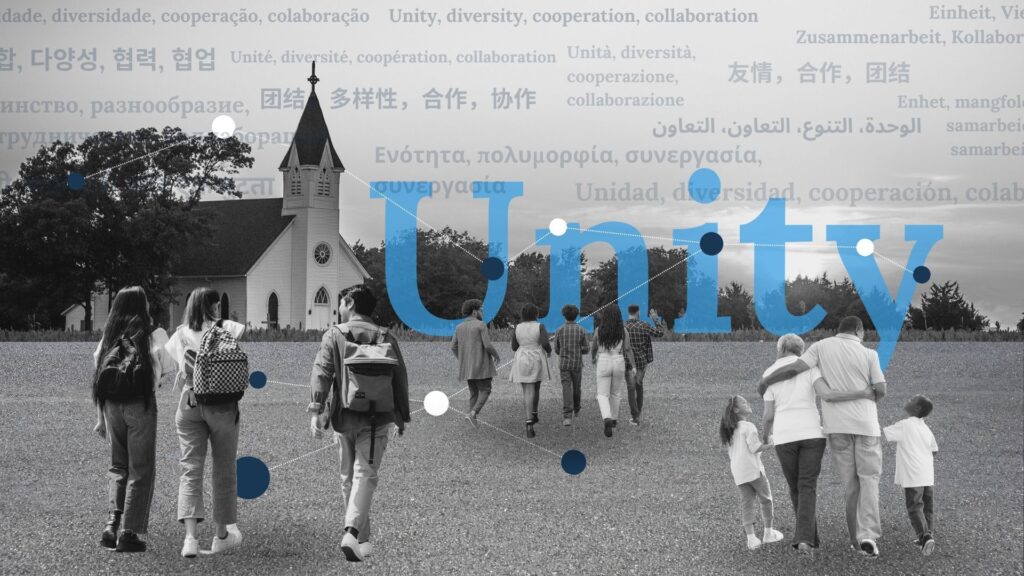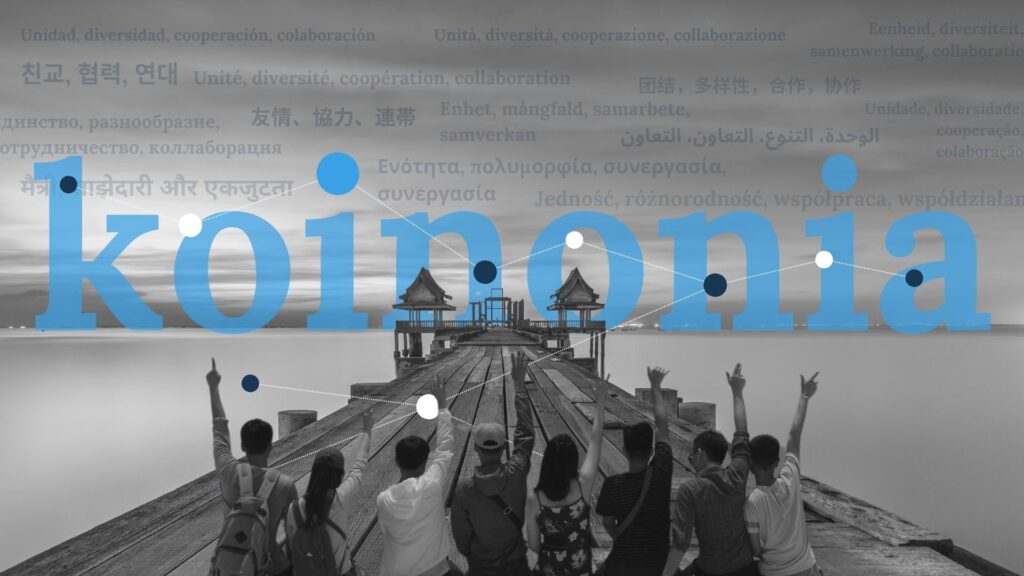Introduction
There was a point in time when mission was understood as the divine right of certain people from certain places to convert some people living in some places to Christianity. The target of mission then was the so-called heathens living in distant lands afar who had no sense of the Divine nor authentic religion. The major focus of mission during the 19th century was winning souls and planting churches while overlooking the social ills of the time that distorted the gospel of Christ. However, with the birth of the 20th century and its emphasis on ecumenism, and the 21st century that features world Christianity, the dynamics have changed. No longer is mission understood in parochial terms nor the gospel as lacking in power for social change. The 21st century missional trends have created a context that makes networking the desirable path for world mission.
The Context for Mission
Both the understanding and execution of mission have evolved over the last century. Allen Yeh contends that a century ago mission was unilateral and unidirectional, from the West to the rest.[1] It was yoked to European expansionism without any regard for the transformation of human societies nor the accommodation of all Christians in every place to be involved. However, in 1810, William Carey popularized the Great Commission as binding on all Christians and advocated for the establishment of mission societies, thereby countering the long-held view that the Great Commission was for the original disciples and later applicable to those from the West and the North. Therefore, the convening of the first international mission conference in 1910 held in Edinburgh, Scotland, is attributed to Carey’s vision by some missiologists a century after.
This conference represents a watershed moment in the global church as it attracted representatives from the Catholics, Orthodox, and Protestants and ended the so-called 19th century ‘great century of missions’ thrust. Allen Yeh references Brian Stanley who postulated the view that Edinburgh was the birthplace of the modern ecumenical movement that later resulted in the establishment of the World Council of Churches in 1948. By this time, the word ‘ecumenism’ had taken on a new meaning. Ecumenism in this context reflects Paul’s usage of the imagery of the body to speak of the unity and diversity in the body of Christ. It connotes the idea of cooperation and collaboration both within and among Christian communions despite theological and ecclesial differences. It concerns the whole church in the sense of denominations cooperating, but it also refers to representation of every nationality or ethnic group, regardless of ecclesial affiliation.

David Bosch described the conference as a remarkable ecumenical evangelical conference.[2] Bosch analysed the history of missions by highlighting six paradigmatic shifts drawing on the work of Hans Küng.[3] The last of the six paradigms mentioned is the emerging ecumenical paradigm that highlights the importance of Christians learning how to live and witness together. Bosch contends that the declining dominance of the West over mission, the growing respect for other cultures and religious expressions and globalization are responsible for the emergence of the ecumenical paradigm. The reality of ecumenism opens the door for the emergence of a new paradigm known as world Christianity.
World Christianity is defined by Allen Yeh as the shift of the centre of gravity of Christianity to the two-thirds world in the last half century.[4] However, the term ‘Majority World’ is preferred as more neutral by some missiologists given the size of Asia, Africa, and Latin America, despite the concern of ethnic minorities in the Western world that might fall within this classification. Among the signs of this phenomenon is the emergence of new missional centres. Towards the end of the 20th century into the 21st century, it became clear that while spectacular numerical church growth was being experienced in Asia, Africa, and Latin America, a major emerging challenge of a post-Christian culture was impacting Europe and North America. Today, more than 55 percent of Christians in the world are in the Majority World. This, however, is not a new phenomenon as Christianity experienced spectacular growth in Asia and Africa from its inception.
Philip Jenkins observes that the church strived for the first thousand years of Christianity’s existence in Asia and Africa, but this story is rarely told in the West.[5] Jenkins argues that the phenomenon of world Christianity is not a discovery but a recovery. It features contextualization in that no culture can make a claim to an exclusive knowledge of God as no one has a full picture of God and innovation as it relates to a theological renaissance. It is when Christians from both the Majority and Minority World come together that innovative orthodoxies will emerge along the lines of Chalcedon, Augustine, and Luther, thereby making reformation an ongoing process. Since Christians from the Majority World have come of age, deliberate and intentional efforts must be made to move beyond dependency to interdependency through collaboration and networking. The reality of global Christianity has led to the maturing of the global church beyond regional arrogance, superiority, and monopoly and the transitioning from denominational egotism and intolerance to an ecumenical spirit marked by religious tolerance, respect, and collaboration. The question then is, given these changes, how best can we do mission in the 21st century?

Missional Koinonia as Framework for Mission Networking
Mission in the 21st century must be embraced as integrated, affirming at the same time evangelism and Christian social action. The church is called to grow through evangelism and discipleship, to be in the service of the world through compassion and justice and to serve the environment through creation care. The onus is on the whole church to communicate the whole gospel to the whole world according to the 1974 Lausanne Covenant (CTC VI).[6]
The framework needed for the execution of integral mission is missional koinonia. The Greek word koinonia means fellowship, partnership, and solidarity. Therefore, missional koinonia connotes the idea of God’s people in partnership together with God and with one another for the holistic transformation of God’s creation that is groaning for restoration. Since the abuse of freedom by Adam and Eve and the introduction of brokenness into human experience, God effected his missional plan to restore the broken world by choosing the Israelites as missional partners, even though they misunderstood their missional calling. The failure of the Israelites to understand and execute God’s mission led to the coming of Christ who redefined mission from God’s side, incorporated his disciples and later the church as missional partners with a focus on world mission that is inclusive and outward looking.
. . . missional koinonia connotes the idea of God’s people in partnership together with God and with one another for the holistic transformation of God’s creation that is groaning for restoration.
This was the type of mission exemplified by Paul in his missional relationships and journeys. Paul states in 1 Corinthians 3:9, ‘For we are God’s fellow workers. You are God’s field, God’s building,’ in response to the emergence of personality cult in the Corinthian church. Missional koinonia, therefore, strives for complementarity not competition; division of labour not monopoly; shared mission not divided purpose; and equal status not inequality. Andrew Walls makes an interesting observation in relation to the horizontal convergence of disciplines in today’s world.[7] He observes that engineers are collaborating with biologists to understand the toughness of conch shell, to apply it to tank armour and auto bodies. The point of the analogy is to underscore the collaboration and interdependence needed to engage in missional advancement and consolidation in this century.
Within the context of world Christianity, diverse giftedness, personnel, and material resources converged. Both sides of the missional divide need each other as it is no longer ‘mission from the West to the rest’ but ‘mission from everyone to everywhere’, including local settings, backyards, and neighbours. Therefore, mission in the 21st century is polycentric, polyphonic, and multidirectional. No one race, culture, region, or church communion can make a claim to missional monopoly because of the sharing of a common humanity, a common calling, and a shared mission. The principle of missional koinonia therefore, makes no allowance for paternalism, monopoly, arrogance, competition, nor isolation. It is a call for partnership and collaboration among equals with diverse giftedness, resources, and numbers; all working with a common purpose and mission to the glory of God. Missional koinonia calls the missional church not so much to independence but to interdependence.
‘[Missional koinonia ] is a call for partnership and collaboration among equals with diverse giftedness, resources, and numbers; all working with a common purpose and mission to the glory of God.’
The principles undergirding missional koinonia are not only applicable to cross cultural partnerships but also within regions and among ethnic groups; within fraternal bodies and ecumenical relationships; among religious communities and non-religious communities. The context of Christian mission in the 21st century is one where religions meet, and Christian communions converge. Therefore, a way must be found to affirm our common humanity and interest in the flourishing of human communities, through partnership and networking. In this way, resource waste and duplications will be minimized and curtailed. This is the challenge of the 21st century—an acknowledgement of the common cause of our shared calling, believing that we are diversely and complementarily gifted by God in Christ, in the power and wisdom of the Holy Spirit, as diverse communions and regions, to pursue our calling in the world through partnership and networking. There is more we can do together than singularly.
Conclusion
So then, let us come to the table humbly, admitting that we do not have it all, neither do we know it all. Therefore, we need one another not to compete but to complement; not to lord it over one another but to submit to the Lord of mission; not to make a claim to missional monopoly but to affirm our common calling. As we commit to networking within the framework of missional koinonia, let us guard against the mistakes of 19th century missional exploits. The missional flourishing being experienced in the Majority World or Global South should not be seen as missional privilege but the positioning of all God’s people to be servant partners. And so, rather than becoming preoccupied with the notion of reverse mission, let the focus be on partnership, networking, collaboration, and interdependence.[8]
Endnotes
- Allen Yeh, Polycentric Missiology (Illinois: InterVarsity Press, 2016).
- David Bosch, Transforming Mission: Paradigm Shifts in Theology of Mission (Maryknoll, NY: Orbis, 2022).
- David Bosch, Transforming Mission (Maryknoll, NY: Orbis, 1991).
- Yeh, Polycentric Missiology.
- Philip Jenkins, The Next Christendom: The Coming of Global Christianity (New York: Oxford University Press, 2002).
- Editor’s Note: See A Radical Vision of the Whole Church by Wonsuk Ma, The Whole Gospel and Community Organizing by Alexia Salvatierra, and The Whole World and the Unreached by Joshua Bogunjoko in Lausanne Global Analysis, May 2023, https://lausanne.org/global-analysis/may-2023-issue-overview.
- Andrew Walls, The Missionary Movement in Christian History: Studies in the Transmission of Faith (Maryknoll, NY: Orbis, 1996).
- Editor’s Note: See Innovative Integration and Collaboration on the Mission Field by Steve Sang-Cheol Moon in Lausanne Global Analysis, September 2023, https://lausanne.org/global-analysis/innovative-integration-and-collaboration-on-the-mission-field-a-holistic-intercultural-approach.

